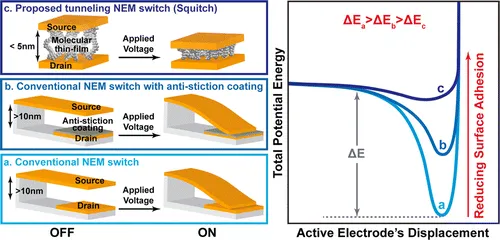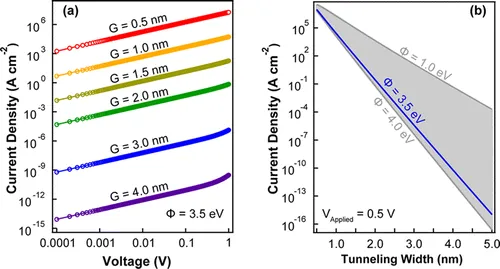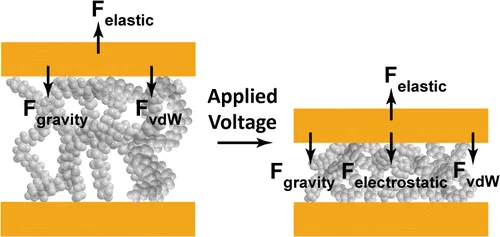Tunneling Nanoelectromechanical Switches
This invention has applications in the development of high-performing electrical switches for integrated circuits and standalone devices.
Researchers
-
tunneling nanomechanical switches and tunable plasmonic nanogaps
United States of America | Granted | 10,475,601
Figures
Technology
The NEM switches described in this invention consists of metal or graphene electrodes separated by a compressible molecular layer several nanometers thick. During actuation, a voltage is applied across the electrodes to induce an electromagnetic force which compresses the molecular layer. This reduces the tunneling gap between the electrodes, thereby resulting in an exponential increase in the current allowed to pass through the switch. When the actuation voltage is removed, elastic recovery of the molecular film pushes the electrodes apart once more and opens the switch.
Unlike conventional NEM switches, no direct contact occurs between the electrodes in this design. This eliminates the problem of stiction -- where adhesion forces overcome the restoring forces the device is capable of supplying and the electrodes become permanently welded together. Additionally, separating the electrodes with a molecular layer instead of an air gap allows the distance between electrodes to be reduced to < 5 nm, compared to > 10 nm in conventional NEM switches, enabling the device to achieve the sub-1 V actuation voltages necessary to be competitive with CMOS technology.
Problems Addressed
Nanoelectromechanical (NEM) switches exhibit abrupt switching behavior and near-zero leakage current, which allows them to outperform conventional semiconductor electrical switches. However, existing NEM switch designs require high actuation voltages and are prone to premature failure due to stiction between contacts. This invention proposes a novel design which overcomes both of these limitations.
Advantages
- Resistant to premature failure by stiction
- Low actuation voltage compared to conventional NEM switches (<1 V)
Publications
Niroui, Farnaz, et al. "Tunneling Nanoelectromechanical Switches Based on Compressible Molecular Thin Films." ACS Nano 9, no. 8 (2015): 7886-7894. doi: 10.1021/acsnano.5b02476
License this technology
Interested in this technology? Connect with our experienced licensing team to initiate the process.
Sign up for technology updates
Sign up now to receive the latest updates on cutting-edge technologies and innovations.


